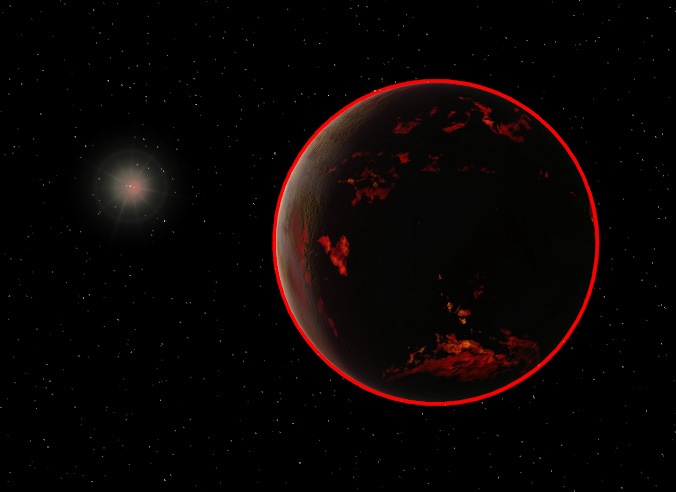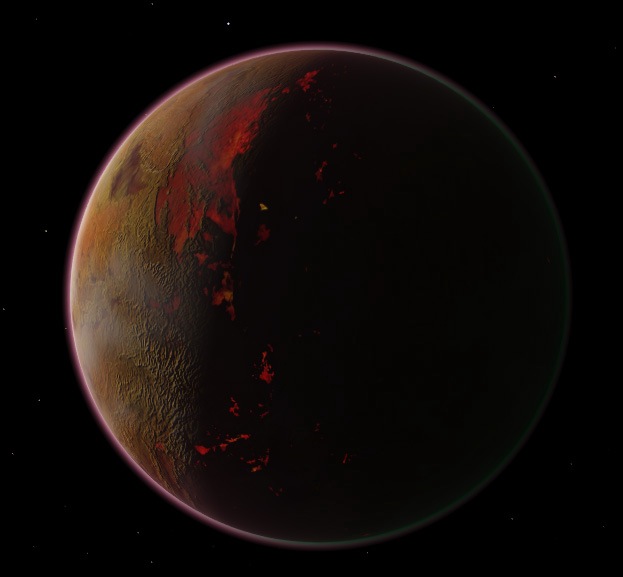
And here's exactly the same planet around another star (Sig Col). The atmosphere rendering is okay in this case (with only one source of light) :

Here's the planet's definition which revealed the problem (I don't think the textures matter much here) :
Code: Select all
"Testella" "HD 98231"
{
Texture "vol-moon.dds"
NightTexture "vol-moon-night.dds"
BumpMap "vol-moonbump.jpg"
BumpHeight 3
Radius 2370
Atmosphere {
Height 60
Lower [ 0.8 0.5 0.3 ]
Upper [ 0.75 0.45 0.25 ]
Sky [ 0.7 0.4 0.2 ]
Mie 0.0005
MieAsymmetry -0.15
Rayleigh [ 0.0010 0.0001 0.00035 ]
Absorption [ 0.0 0.000022 0.00022 ]
MieScaleHeight 18
CloudHeight 4
CloudSpeed 10
CloudMap "vol-moon-clouds.png"
}
EllipticalOrbit {
Period 1.6152
SemiMajorAxis 0.08
Eccentricity 0.0068
Inclination 0.3947
AscendingNode 76.681
LongOfPericenter 131.533
MeanLongitude 181.979
}
RotationPeriod 0.12
Obliquity 177.4
LongOfRotationAxis 121.07
Albedo 0.9
}
